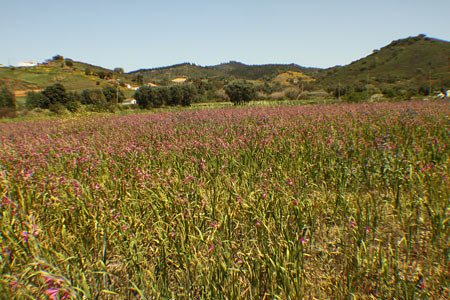 I wanted to write a little about the cork trees which surround the Quinta. These are the trees which have their bark harvested every 10 years or so – never less than 9 and you can see the year of the future harvest for any tree from the large white number painted onto it.
I wanted to write a little about the cork trees which surround the Quinta. These are the trees which have their bark harvested every 10 years or so – never less than 9 and you can see the year of the future harvest for any tree from the large white number painted onto it.
These forests are really a long term investment. The first harvest is at approx 25 years of age. At this age the cork is suitable for floor tiles and not much else. At 34 years old the second harvest is still too poor for cork stoppers for wine. It’s not until they are 43 years old that the cork can really be used for the wine industry.
The cork oak forests of the Alentejo supply 70% of the world’s cork, including 15 billion corks a year for wine bottles. An average tree will live for between 170 and 200 years, go through 17 harvests and produce around 4,000 corks a harvest.
Stripping the cork is a skilled manual job. It has never been successfully mechanised and the trees actually benefit from the stripping.
So why should we care? Well back in the 80’s EU subsidies were encouraging maize growing and the abandonment of Cork forests. When this combined with the growth in wine consumption, standards deteriorated to meet demand and TCA (trichloroanisol) started to appear. This causes the wines to be “corked”. The lowering of quality in turn encouraged the emergence of plastic corks as competition.
However stringent quality control standards have lowered the incidence of TCA and the industry is fighting back.
But why should we care? Well if the farmers switch from cork to maize then the habitat which supports an amazing variety of wild life , from the Iberian Lynx, (the world’s most endangered big cat), through to birds like the Bee Eater will be lost, probably for ever.The end result could well be desert and scrub land across the beautiful Alentejo.
So please…if you have a choice go for a wine with a proper cork in it 🙂





